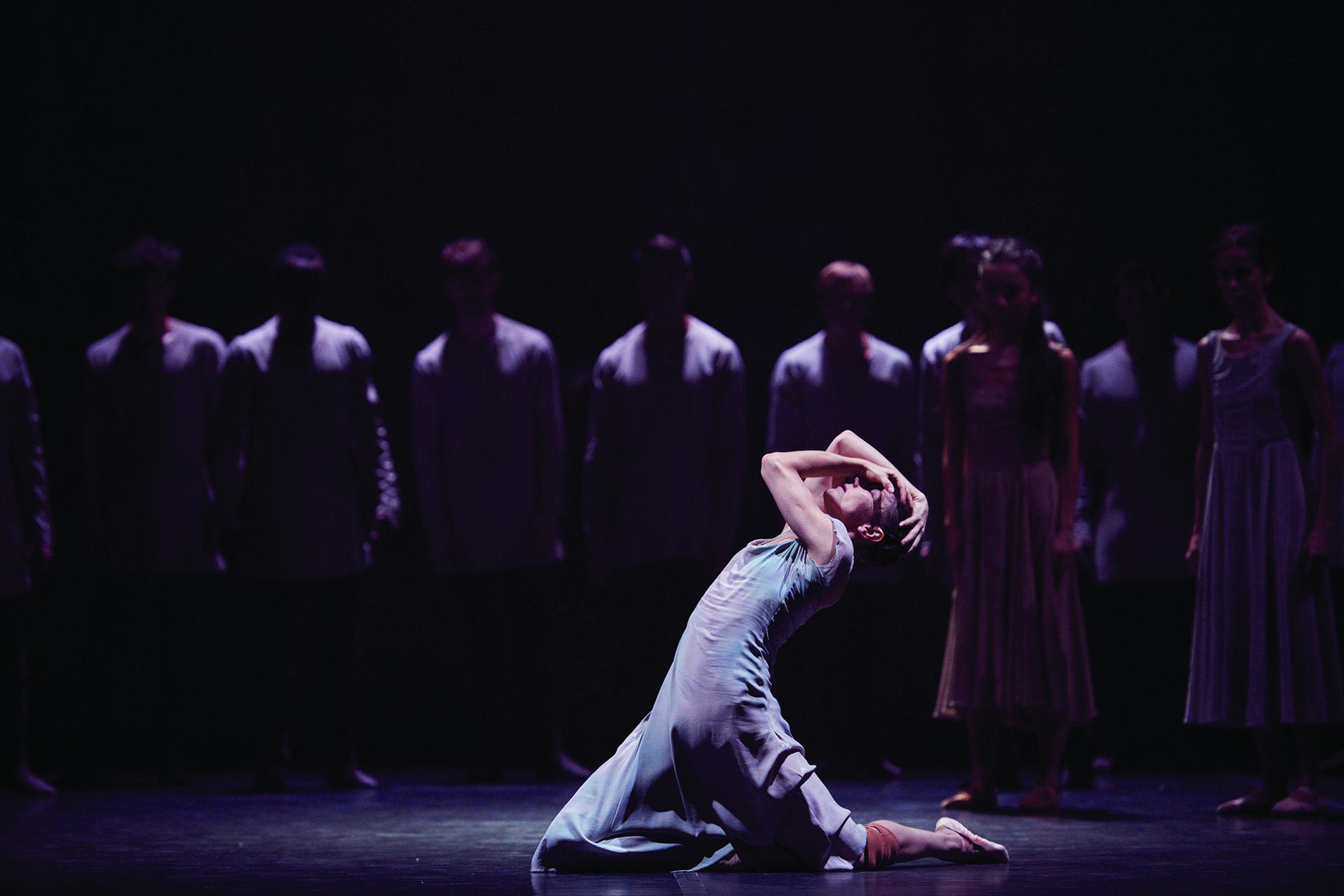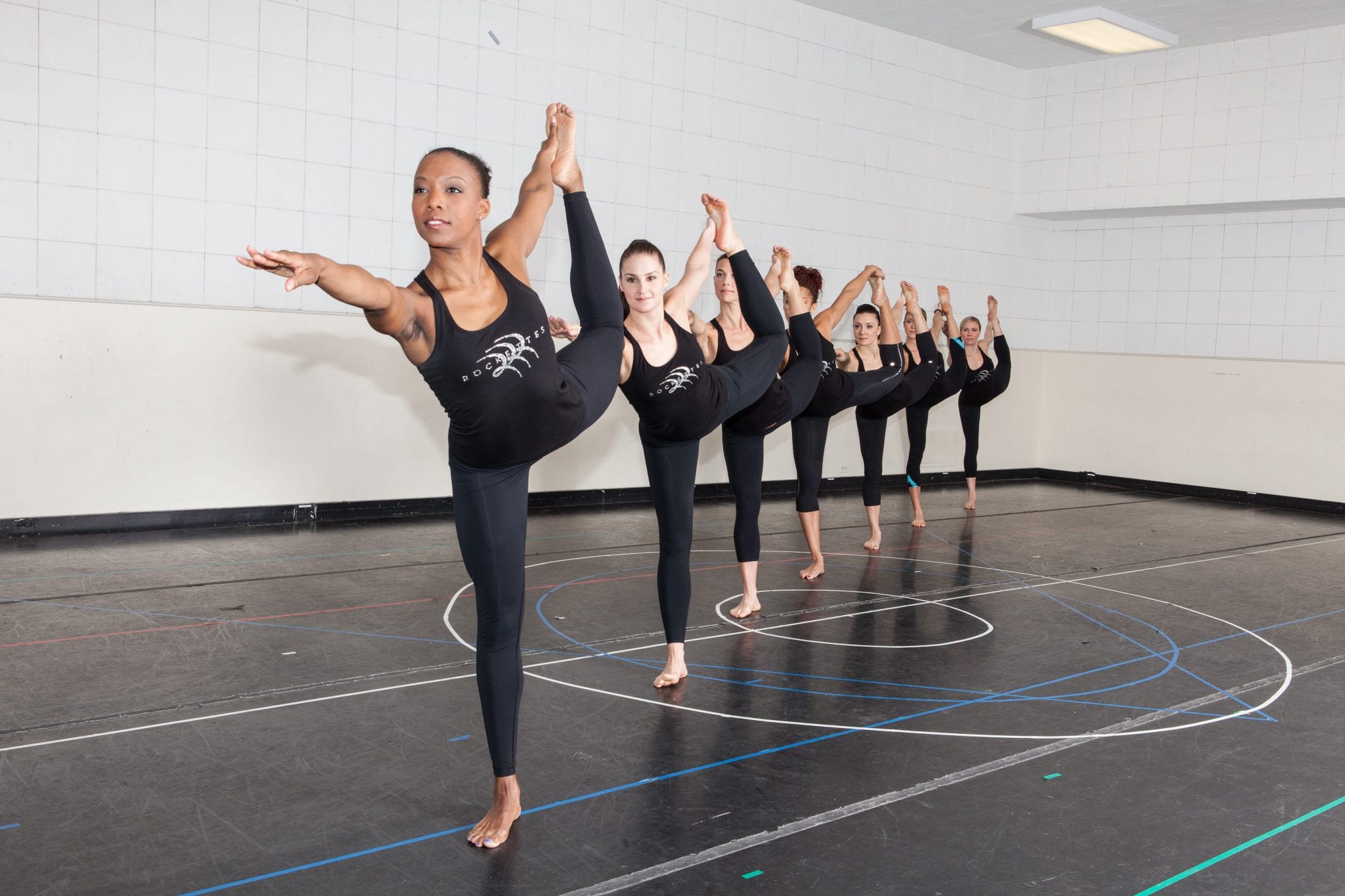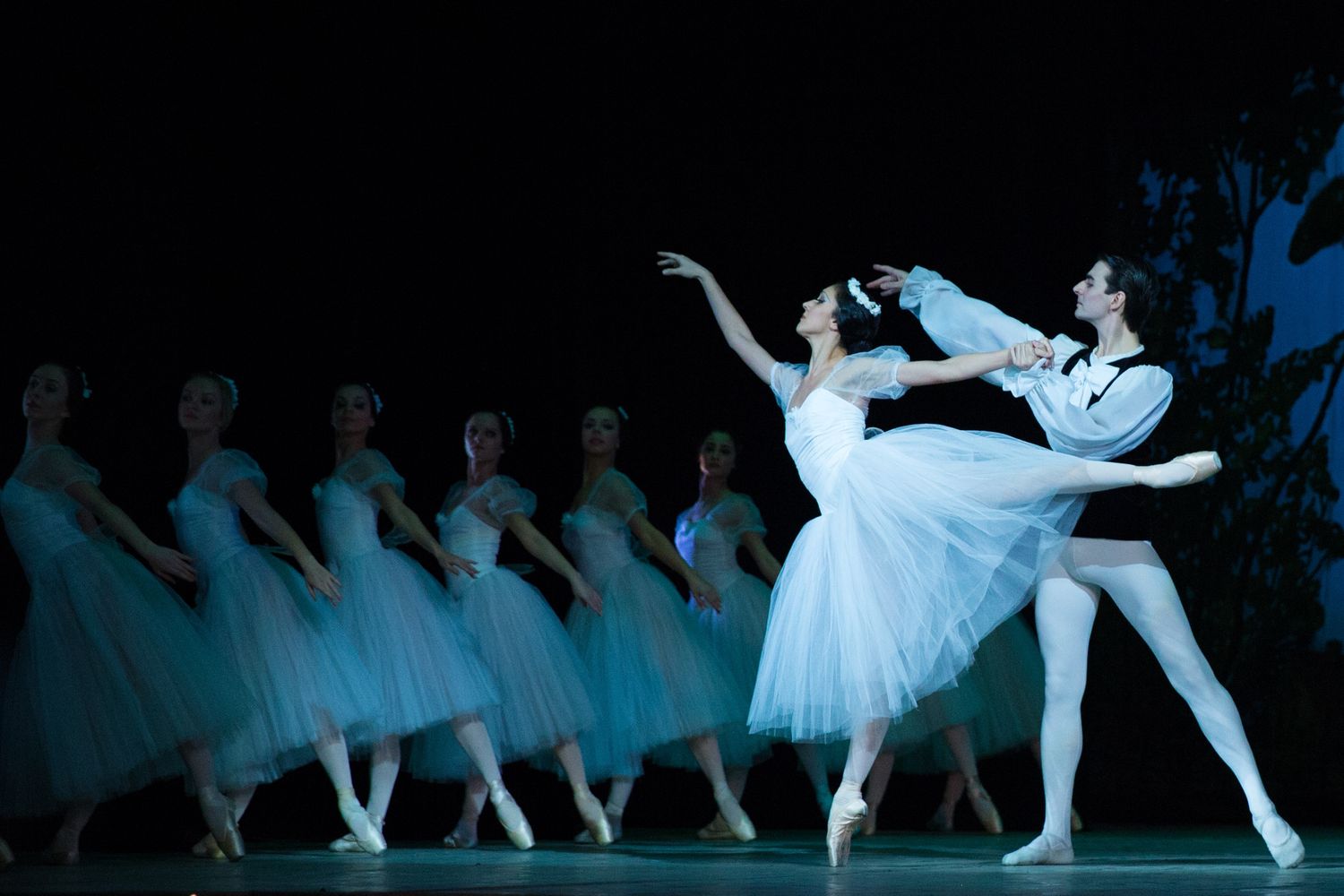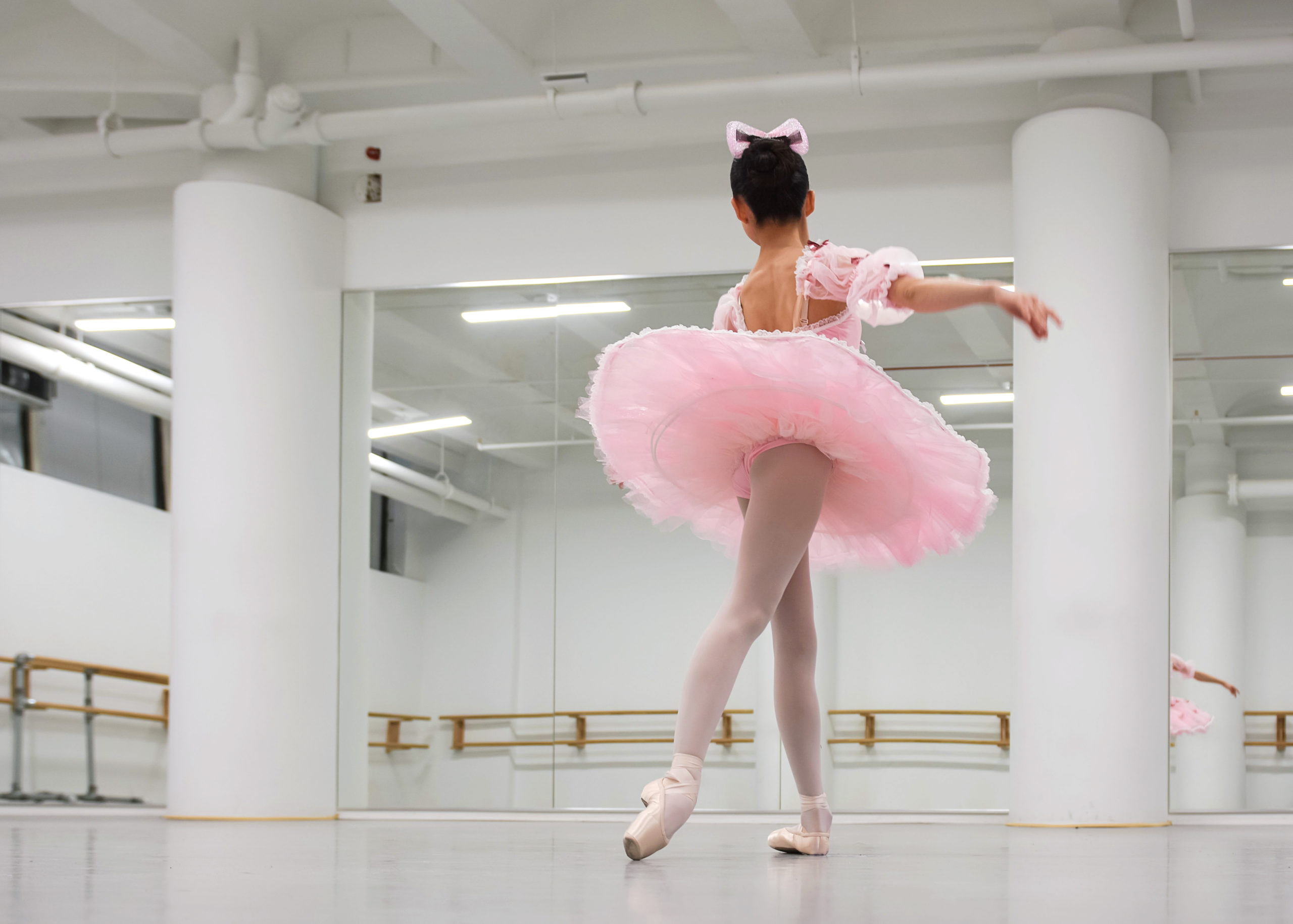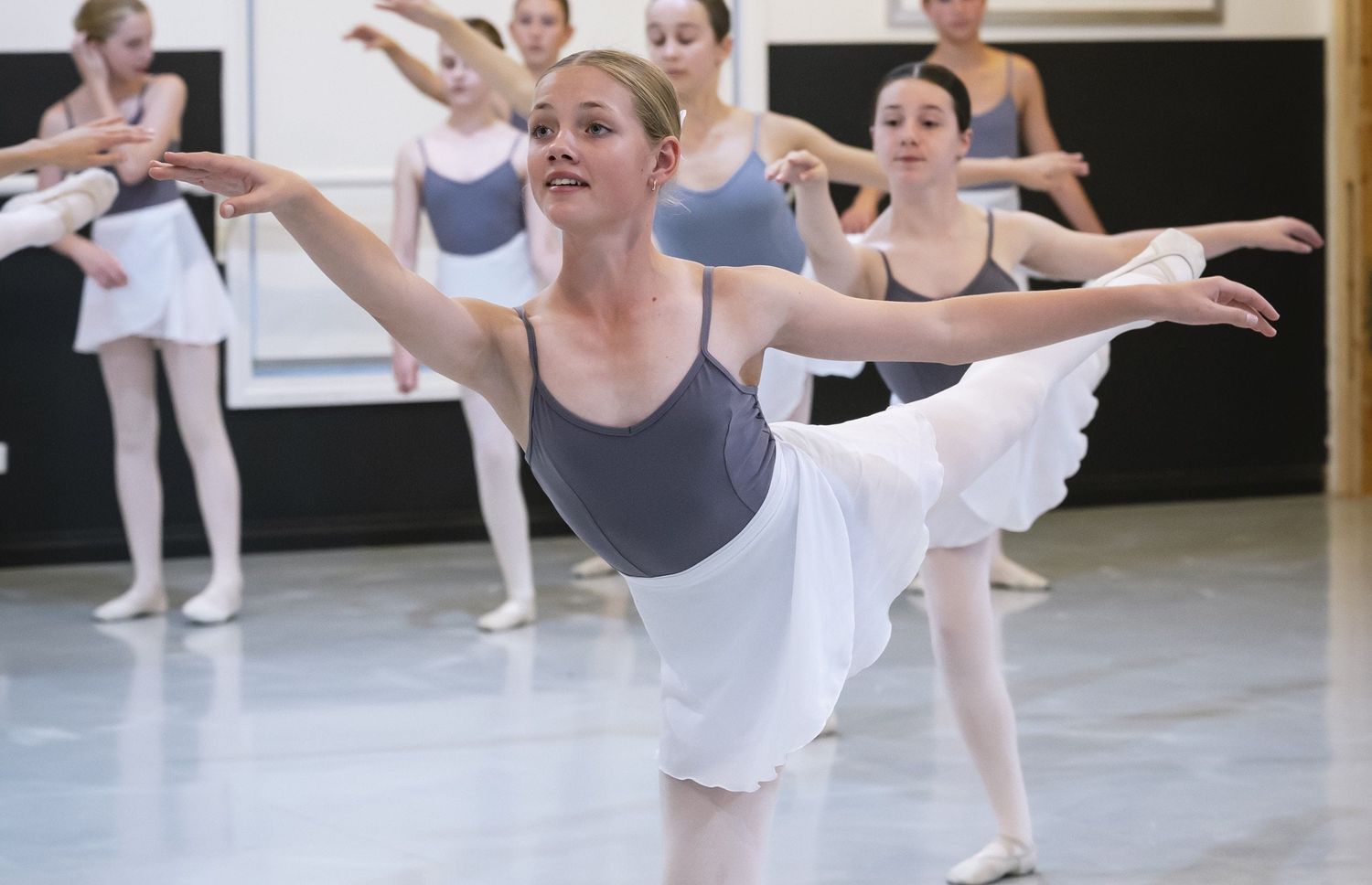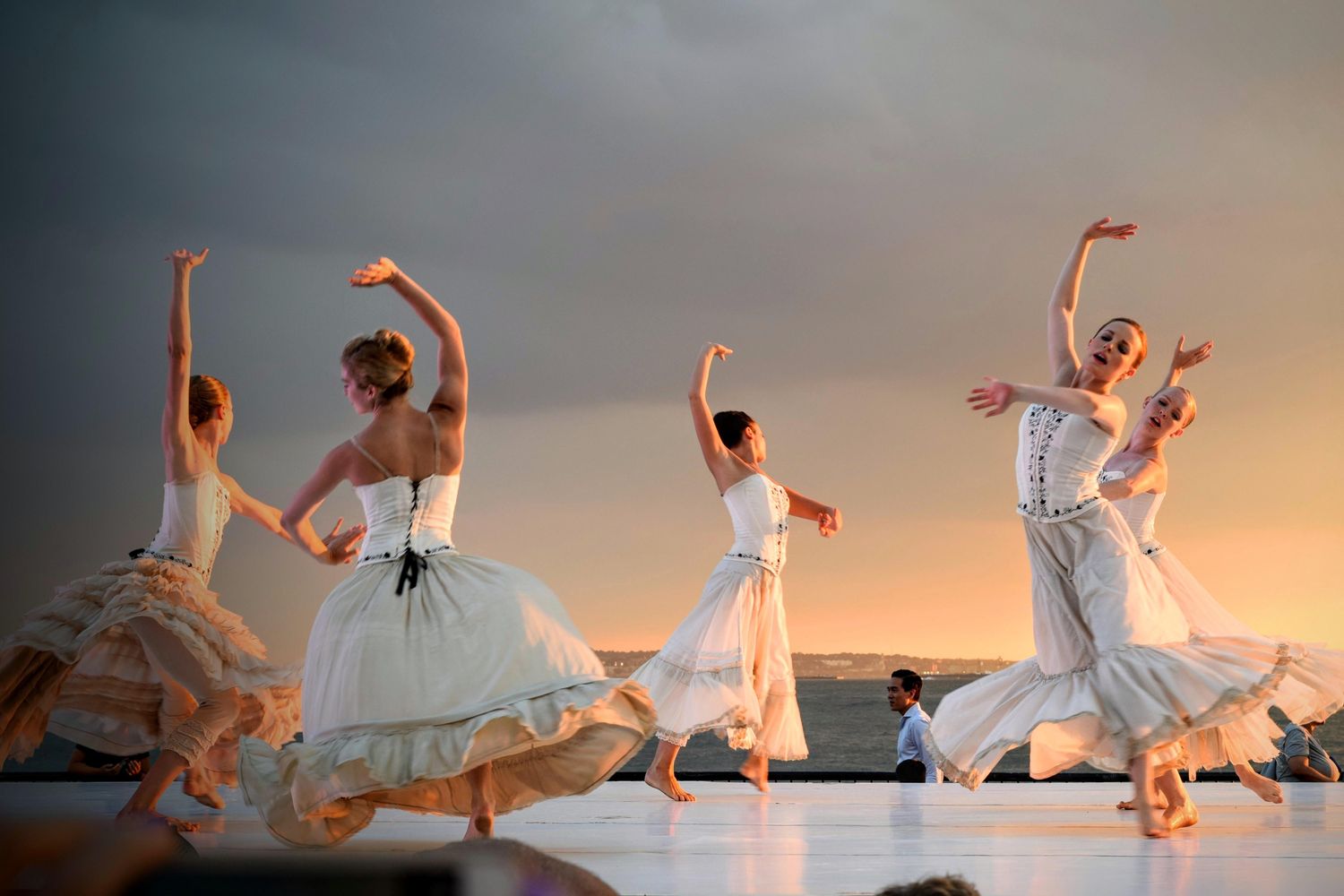Home>Events & Info>Ballet>How To Describe Ballet
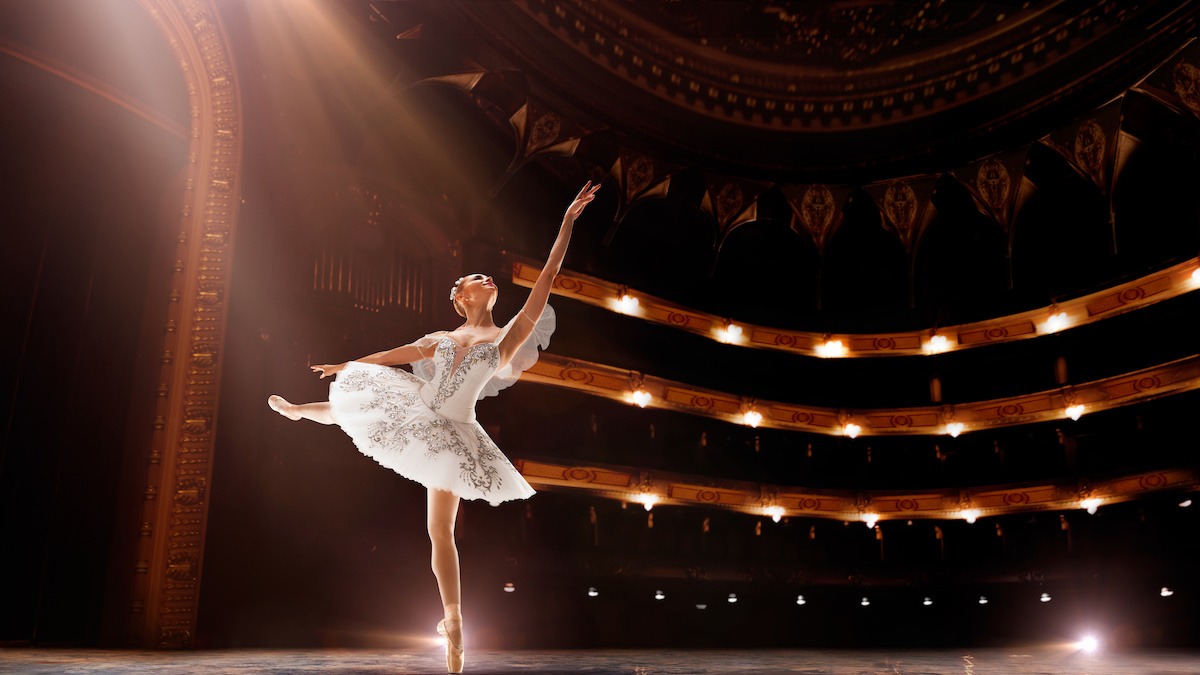

Ballet
How To Describe Ballet
Modified: January 22, 2024
Learn how to describe ballet movements, positions, and techniques in this comprehensive guide. Enhance your dance vocabulary and deepen your understanding of ballet.
(Many of the links in this article redirect to a specific reviewed product. Your purchase of these products through affiliate links helps to generate commission for AudioLover.com, at no extra cost. Learn more)
Table of Contents
- Introduction
- The History of Ballet
- Understanding the Basics: Ballet Technique and Vocabulary
- Describing Ballet Movements and Positions
- Analyzing Ballet Performances: Techniques and Styles
- Appreciating the Artistry: Interpretation and Expression in Ballet
- Discussing Ballet Costumes and Set Designs
- Exploring Famous Ballets and Choreographers
- Conclusion
Introduction
Ballet is a graceful and expressive art form that has captivated audiences for centuries. With its origins dating back to the Italian Renaissance courts of the 15th century, ballet has evolved into a highly technical and disciplined dance style that showcases the beauty and strength of the human body. Whether you are a ballet enthusiast, a curious beginner, or simply someone who appreciates the art of movement, understanding how to describe ballet can deepen your appreciation for this extraordinary art form.
In this article, we will explore the history of ballet, delve into the basics of ballet technique and vocabulary, learn how to describe ballet movements and positions, analyze different ballet styles and techniques, appreciate the artistry of interpretation and expression in ballet, discuss the significance of ballet costumes and set designs, and explore some of the most famous ballets and notable choreographers.
Through this comprehensive guide, you will gain valuable insights into the world of ballet and be equipped with the knowledge to engage in meaningful discussions about this exquisite art form.
So, whether you find yourself watching a ballet performance, attending a dance class, or simply discussing ballet with fellow enthusiasts, let’s dive into the enchanting world of ballet and learn how to describe its beauty and intricacy.
The History of Ballet
Ballet has a rich and fascinating history that spans several centuries, originating in the courts of Renaissance Italy and eventually flourishing in France and Russia. Its evolution is a testament to the enduring appeal of this graceful and expressive dance form.
The roots of ballet can be traced back to the Italian Renaissance courts of the 15th century, where lavish performances and entertainments were staged to celebrate marriages and important events. These early dance forms influenced the development of ballet as we know it today, with dancers incorporating elaborate footwork, intricate patterns, and graceful movements.
During the 16th and 17th centuries, ballet gained prominence in the French court under the patronage of King Louis XIV, known as the Sun King. Louis XIV himself was an avid dancer and played a significant role in shaping ballet into a formalized art form. In 1661, he established the Académie Royale de Danse, the first official dance academy, which laid the groundwork for the codification of ballet technique and vocabulary.
With the opening of the Paris Opera Ballet School in 1713, ballet continued to flourish and expand its repertoire. The 19th century saw a surge in creativity and innovation, with the emergence of romantic ballets such as “Giselle” and “La Sylphide,” which featured ethereal female dancers and evocative storytelling.
In the late 19th and early 20th centuries, the influence of Russian ballet became prominent with the rise of ballet companies such as the Imperial Ballet in St. Petersburg (now known as the Mariinsky Ballet) and the Bolshoi Ballet in Moscow. Visionary choreographers such as Marius Petipa and Michel Fokine pushed the boundaries of ballet, introducing new techniques and narrative styles through iconic works like “Swan Lake,” “The Nutcracker,” and “The Firebird.”
Ballet continued to evolve and diversify throughout the 20th century, with the emergence of neoclassical and contemporary ballet styles. Choreographers like George Balanchine and Merce Cunningham shattered traditional conventions, experimenting with abstract movements and unconventional music choices.
Today, ballet remains a beloved art form, celebrated for its technical precision, artistry, and ability to tell stories through movement. It has expanded its reach through companies, schools, and performances around the world, ensuring its legacy for generations to come.
Understanding the historical development of ballet is crucial in appreciating the art form’s evolution and its lasting impact on the world of dance. By delving into the history of ballet, we gain a deeper understanding of the traditions, techniques, and influences that continue to shape this captivating art form.
Understanding the Basics: Ballet Technique and Vocabulary
Ballet is known for its technical rigor and precision, which is achieved through years of training and discipline. To describe ballet accurately, it is essential to have a grasp of the fundamental techniques and vocabulary used in this dance form.
One of the foundational elements of ballet technique is the concept of turnout. Turnout refers to the rotation of the leg at the hip joint, which allows dancers to achieve a wide range of positions and movements. Dancers strive for a 180-degree turnout, with the feet and legs rotating outward from the hips.
Ballet vocabulary is rooted in the French language, reflecting the historical influence of French court ballet. Learning some key terms will enable you to describe ballet movements and positions more effectively. For example, the five basic positions of the feet include the first position (heels together and toes turned out), second position (feet apart with toes turned out), third position (one foot in front of the other with the heel touching the arch), fourth position (feet apart with one foot in front of the other), and fifth position (one foot positioned in front of the other with the heel of the front foot touching the arch of the back foot).
Ballet movements can be classified into two broad categories: adagio and allegro. Adagio movements are slow and graceful, emphasizing balance, extension, and fluidity. Allegro movements, on the other hand, are fast and energetic, showcasing jumps, turns, and quick footwork.
Some common ballet movements include plié (bending of the knees), relevé (rising onto the balls of the feet), tendu (extending the leg while the foot remains in contact with the floor), and grand jeté (a large leap with one leg extended forward and the other leg extended backward).
Describing a ballet performance requires an understanding of the technical aspects and vocabulary, but it also involves capturing the artistry and emotions conveyed through the movements. It’s important to consider the precision and control of the dancers, the fluidity and grace of their movements, and the emotions expressed through their facial expressions and body language.
By familiarizing yourself with the basics of ballet technique and vocabulary, you will be able to appreciate and describe the intricate movements and positions that make ballet such a visually stunning and captivating art form.
Describing Ballet Movements and Positions
Ballet movements are an exquisite blend of grace, strength, and precision. To accurately describe ballet movements and positions, it is important to understand the technical aspects and the visual impact they create.
One of the fundamental movements in ballet is the plié. A plié involves bending the knees while keeping the back straight and the feet firmly on the ground. It is often used as a preparation for jumps and turns, adding fluidity and grace to the dancer’s movements.
Relevé is another commonly used movement in ballet, where dancers rise onto the balls of their feet while maintaining proper alignment of the body. This movement showcases the strength and control of the dancer, and it is often used in jumps and turns to create elevation and lightness.
Tendu is a graceful movement where the leg extends from a closed position to an open position, with the foot remaining in contact with the floor. It is used to create long lines and emphasize the length and flexibility of the leg.
Another essential aspect of ballet is jumps. Ballet jumps can vary in height, speed, and execution, adding dynamism and excitement to the performance. A grand jeté, for example, is a breathtaking leap where the dancer extends one leg forward while the other leg extends backward, creating an impressive arc in the air.
Ballet positions refer to the placement of the feet and arms. The five basic positions of the feet—first, second, third, fourth, and fifth—are fundamental to the foundation of ballet technique. Each position has specific characteristics, such as the alignment of the feet, turnout, and the placement of the arms.
First position involves the feet being together and turned out, forming a straight line. Second position has the feet hip-width apart, maintaining the same turnout. Third position is created by placing one foot in front of the other, with the heel of the front foot touching the arch of the back foot. Fourth position has one foot placed in front of the other, with a wider distance between them. Fifth position, the most difficult of the basic positions, has one foot positioned in front of the other, with the heel of the front foot touching the arch of the back foot.
When describing ballet movements and positions, it is crucial to consider the dancer’s technique, alignment, and overall execution. Pay attention to the fluidity and grace of their movements, the strength and control they exhibit, and the precision with which they execute each step. By using descriptive language and vivid imagery, you can capture the beauty and artistry of ballet.
Keep in mind that ballet movements and positions are not isolated elements but are seamlessly woven together to create a mesmerizing performance. Describing these movements requires a keen eye for detail and an appreciation for the technicality and expressiveness that dancers bring to the stage.
Analyzing Ballet Performances: Techniques and Styles
Ballet performances are a visual feast of technique, artistry, and storytelling. To analyze a ballet performance effectively, it is important to consider the various techniques and styles that shape the dance and contribute to its overall impact.
One of the key aspects to assess in a ballet performance is the technical proficiency of the dancers. Look for their ability to execute complex movements with precision and control. Evaluate the clarity of their footwork, the height and extension of their jumps, and the fluidity of their turns. A strong technical foundation is crucial in conveying the intended message and creating a captivating performance.
Another critical element to consider is the overall style of the ballet. Ballet encompasses a range of styles, each with its own unique characteristics and movements. Classical ballet, characterized by long lines, graceful movements, and intricate footwork, showcases the traditional techniques and vocabulary of the art form. Neoclassical ballet, on the other hand, incorporates more abstract and contemporary movements while still maintaining elements of classical technique. Contemporary ballet pushes the boundaries of traditional ballet technique with experimentation, unconventional movements, and unique storytelling approaches.
When analyzing a ballet performance, pay attention to the choreography. Choreographers play a vital role in creating the movements and sequences that shape the performance. Consider the originality, creativity, and cohesiveness of the choreography. Look for innovative use of space, interesting formations, and dynamic group work. Choreographers often infuse their own artistic vision and interpretive elements into the ballet, so analyzing their choices can provide valuable insights.
Another factor to consider is the music accompanying the ballet performance. The music sets the tone, rhythm, and mood for the dancers and audience. Analyze the relationship between the music and the choreography. Look for moments of synchronization, where the dancers move in harmony with the music, as well as instances of contrast or deliberate divergence. The music enhances the emotional impact and narrative of the ballet, so its analysis is crucial in understanding the performance as a whole.
Lastly, observation of the dancers’ artistry and expression is essential. Look for their ability to embody the characters and emotions conveyed in the ballet. Observe their facial expressions, body language, and use of gesture to effectively communicate the story and convey the intended emotions. A compelling performance goes beyond technical proficiency and incorporates a deep level of artistry that touches the hearts of the audience.
By analyzing the techniques and styles present in a ballet performance, you can gain a deeper appreciation for the artistry, dedication, and skill that goes into creating a captivating ballet. From the technical proficiency of the dancers to the choreographic choices and the expressive elements, each aspect contributes to the overall impact and beauty of the performance.
Appreciating the Artistry: Interpretation and Expression in Ballet
A truly captivating ballet performance goes beyond the technical execution of movements. It is in the realm of interpretation and expression where the true artistry of ballet shines through. To fully appreciate a ballet, we must delve into the depths of the dancers’ interpretive abilities and their capacity to convey emotions through movement.
Ballet is a unique art form that allows dancers to communicate without words, relying solely on their bodies and expressions. Through subtle gestures, sweeping movements, and nuanced facial expressions, dancers bring characters to life and evoke emotions in the audience. The ability to interpret and embody the essence of a character is what sets extraordinary ballet dancers apart.
When analyzing the artistry of a ballet performance, pay attention to how the dancers infuse their movements with emotion and intent. Observe the subtleties of their facial expressions as they convey joy, sorrow, love, or anger. The way their bodies seamlessly flow from one movement to another, creating a fluid and organic narrative, adds depth and richness to the performance.
Another aspect of appreciating artistry in ballet is understanding the choreographer’s vision. Each ballet is a collaborative effort between the choreographer, dancers, composers, and other creative minds involved. Choreographers shape the movements, selecting gestures, steps, and formations that best convey their artistic intentions. By critically analyzing a ballet performance, you can gain insight into the choreographer’s choices and the story they aim to tell.
One of the joys of ballet is its ability to transport audiences into different worlds and evoke complex emotions. From the ethereal beauty of a romantic ballet to the dramatic intensity of a contemporary piece, each style offers a unique experience. As an audience member, allow yourself to be swept away by the artistry on stage. Immerse yourself in the story, the music, and the emotions portrayed, and let your own interpretation and imagination be stirred.
It is worth noting that appreciation of artistry in ballet is a subjective experience. Each person may have their own interpretation and emotional response to a performance. What may move one person to tears may evoke different emotions in another. Embrace the diversity of perspectives and allow yourself to be open to the personal connections you make with the performance.
By appreciating the artistry of interpretation and expression in ballet, you can truly immerse yourself in the enchanting world of this captivating dance form. Witnessing dancers breathe life into characters, convey emotions without words, and weave together a narrative through movement is a testament to the power and beauty of ballet as an art form.
Discussing Ballet Costumes and Set Designs
Ballet is not only a visual feast of movement and expression but also a visual spectacle brought to life through elaborate costumes and set designs. The careful selection of costumes and the creation of immersive sets significantly contribute to the overall atmosphere and storytelling of a ballet performance. Let’s delve into the importance of ballet costumes and set designs and their impact on the audience’s experience.
Ballet costumes play a crucial role in bringing characters to life and enhancing the narrative. They are meticulously designed to showcase the dancers’ movements while adding a touch of beauty and flair. From the flowing tutus of classical ballet to the avant-garde attire of contemporary pieces, costumes showcase the distinctive style and time period of a ballet.
Costumes are crafted with careful attention to detail, considering the fabric choice, color palette, and embellishments. They contribute to the visual storytelling by reflecting the characters’ personality, status, and emotions. For example, a delicate white tutu may convey purity, while a vibrant and ornate costume may represent a regal character.
Set designs, including backdrops, props, and stage elements, create the environment and ambiance in which the ballet unfolds. They transport the audience to different worlds, whether it’s a fairytale kingdom, a bustling cityscape, or a mystical forest. The set designs set the mood, enhance the storytelling, and provide a visual framework for the dancers’ performances.
Set designers utilize various techniques, such as lighting, scenic painting, and innovative stage mechanics, to create visually stunning and immersive environments. Every element, from the carefully crafted backdrops to the intricately designed props, adds depth and dimension to the narrative, complementing the dancers’ movements and expressions.
Costumes and set designs are collaborative efforts, often involving costume designers, scenic designers, choreographers, and directors. They work together to ensure that the visual elements align seamlessly with the choreography, music, and overall vision of the production.
When discussing ballet costumes and set designs, it is important to consider their functionality as well. Ballet costumes must strike a balance between aesthetics and functionality, allowing dancers to move freely and perform intricate steps while still evoking the desired character or theme. Set designs must also provide a functional and safe space for the dancers, accommodating their movements and ensuring their well-being.
As an audience member, appreciating the craftsmanship and artistry of ballet costumes and set designs adds another layer of enjoyment to the performance. Observe how the colors, textures, and designs of the costumes enhance the dancers’ movements and help convey the narrative. Pay attention to the use of lighting and stage elements to create atmospheres and highlight key moments.
Ballet costumes and set designs are not mere adornments; they are dynamic components that enhance the storytelling and elevate the audience’s experience. The attention to detail and creativity in these visual elements contribute to the overall magic and allure of ballet as a captivating and multidimensional art form.
Exploring Famous Ballets and Choreographers
The world of ballet is rich with a diverse range of famous ballets and renowned choreographers who have left an indelible mark on the art form. Exploring these iconic ballets and the creative minds behind them provides a deeper appreciation of the evolution and impact of ballet.
An exemplary ballet that has captivated audiences for over a century is “Swan Lake.” Created by composer Pyotr Ilyich Tchaikovsky and choreographers Marius Petipa and Lev Ivanov, “Swan Lake” tells a tale of love, betrayal, and transformation. It is known for its stunning choreography, evocative music, and the dual role of Odette/Odile, danced by a single ballerina, showcasing the virtuosity and dramatic range of the lead dancer.
Another iconic ballet is “The Nutcracker,” a beloved holiday tradition that continues to enchant audiences of all ages. Choreographed by Marius Petipa and Lev Ivanov, with music by Tchaikovsky, “The Nutcracker” follows the fantastical journey of Clara as her nutcracker comes to life and takes her to the Land of Sweets. This ballet showcases a dazzling array of characters, intricate choreography, and enchanting set designs, making it a perennial favorite.
George Balanchine, often considered one of the most influential choreographers in the history of ballet, created numerous groundbreaking ballets. His neoclassical style brought a fresh and modern approach to the art form. Balanchine’s works, such as “Apollo,” “Serenade,” and “The Four Temperaments,” showcased his innovative use of space, musicality, and the fluidity of movement. His impact on ballet continues to be felt today through the New York City Ballet, which he co-founded.
Another celebrated name in ballet is Sir Kenneth MacMillan, a prolific British choreographer. MacMillan’s works, including “Romeo and Juliet,” “Manon,” and “Mayerling,” pushed the boundaries of storytelling and emotional depth in ballet. He brought a darker, psychological aspect to his choreography, delving into complex characters and intense narratives. MacMillan’s ballets combined technical brilliance with raw emotional expression, leaving a lasting impact on the art form.
The list of influential choreographers in ballet is vast and diverse. From the romantic ballets of August Bournonville to the avant-garde works of William Forsythe, each choreographer brings their unique voice and artistic vision to the stage. These choreographers shape the evolution of ballet through their innovative movements, unique perspectives, and ability to push the boundaries of the art form.
Exploring famous ballets and their choreographers offers a glimpse into the evolution of ballet as an art form. Each ballet and choreographer represents a distinct era, style, and creative approach, contributing to the vast tapestry of ballet history. Their works continue to inspire and be celebrated by audiences around the world, showcasing the enduring power and beauty of ballet.
Conclusion
Ballet is a captivating art form that encompasses technical precision, artistic expression, and storytelling. Through this comprehensive guide, we have explored various aspects of ballet, from its rich history to the intricacies of technique and vocabulary. We have also delved into the artistry and interpretation behind ballet movements, the significance of costumes and set designs, and the influential ballets and choreographers that have shaped the art form.
Understanding how to describe ballet provides a deeper appreciation for the beauty and complexity of this dance form. By recognizing the technical elements, such as turnout, positions, and movements, we gain insight into the discipline and dedication required of ballet dancers. Additionally, analyzing the artistry of interpretation and expression allows us to appreciate the emotional depth and storytelling aspects that make ballet performances truly mesmerizing.
Beyond the movement and expression, ballet costumes and set designs play a pivotal role in creating immersive and visually stunning experiences for audiences. They enhance the narrative, transport us to different worlds, and contribute to the overall magic of a ballet performance. The choreographers and their creative vision bring all these elements together, pushing the boundaries of ballet and showcasing the evolution of the art form.
In conclusion, ballet is a profound and multifaceted art form that continues to captivate audiences worldwide. It is a testament to the sheer dedication, skill, and creativity of the dancers, choreographers, costume designers, set designers, and all the artists involved in bringing ballet to life. Whether you are a ballet enthusiast, a curious beginner, or simply someone who appreciates art, embracing the beauty and intricacy of ballet is a rewarding journey that inspires an enduring love for this timeless art form.


